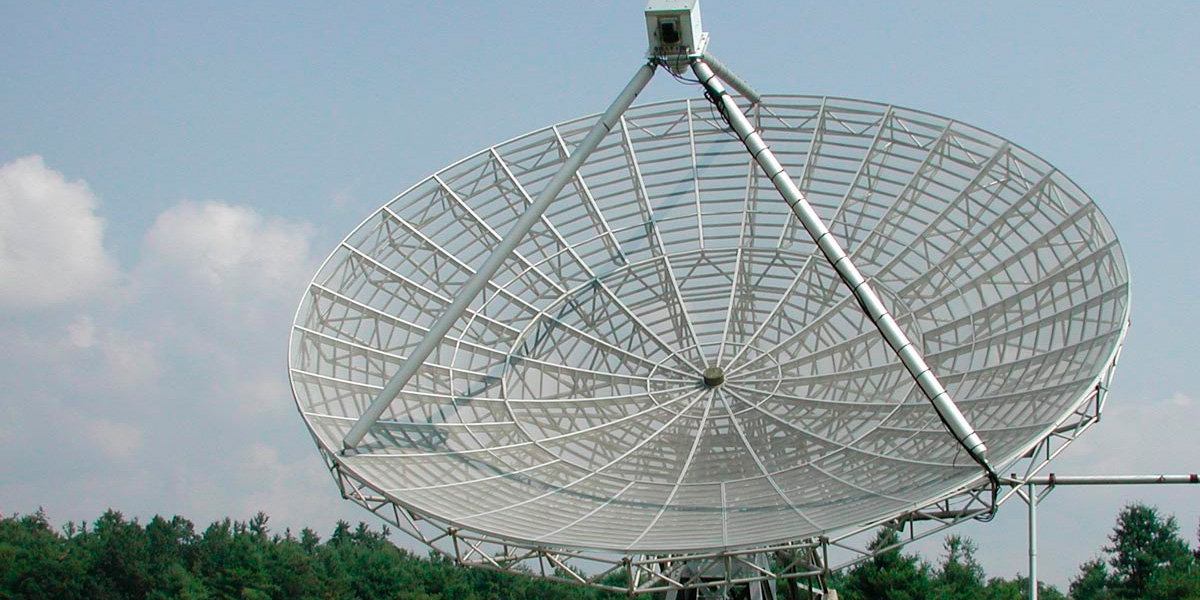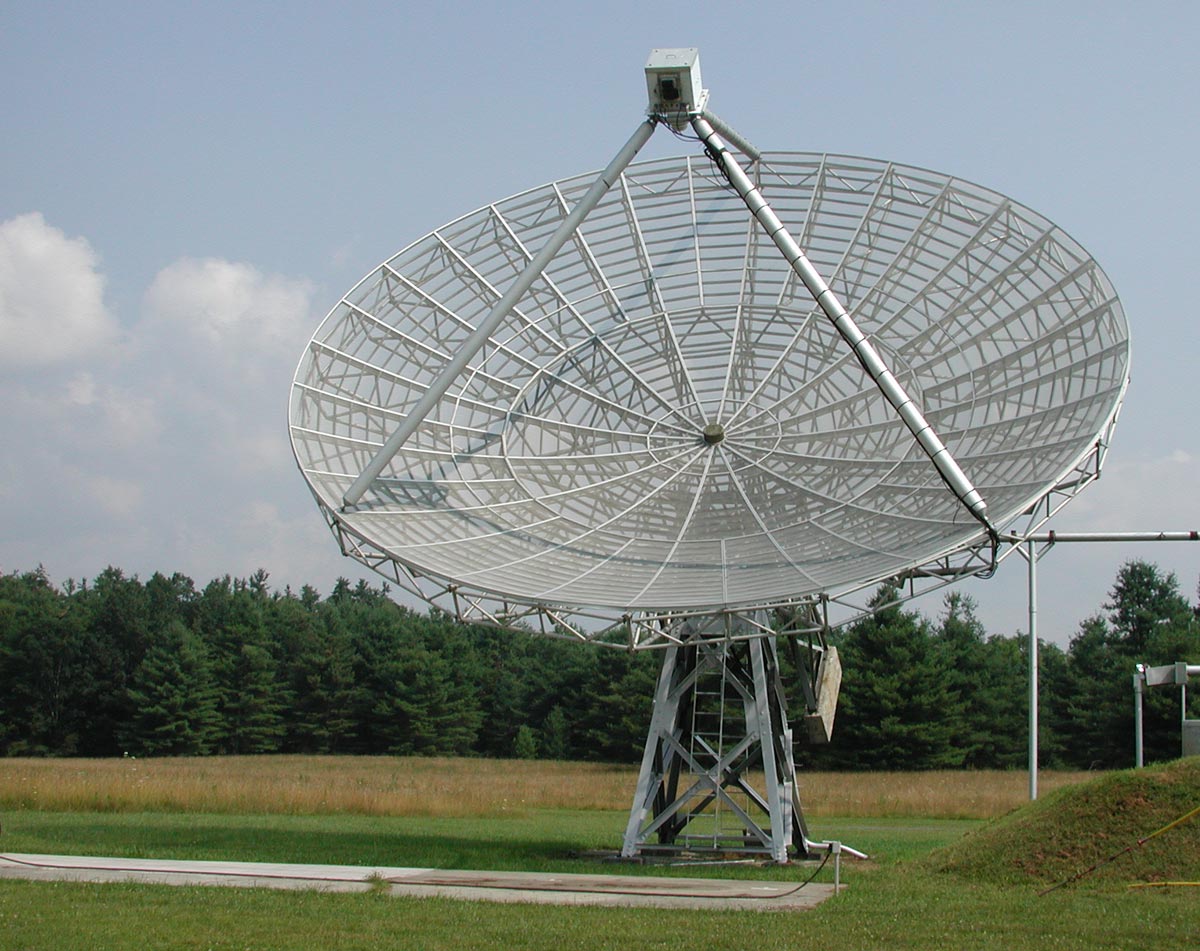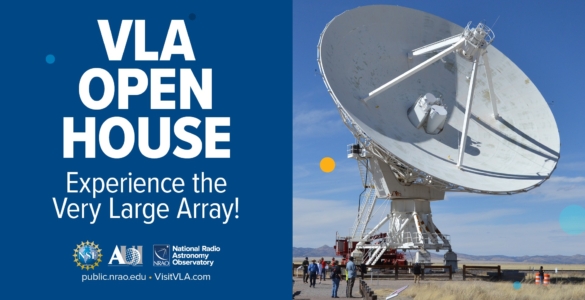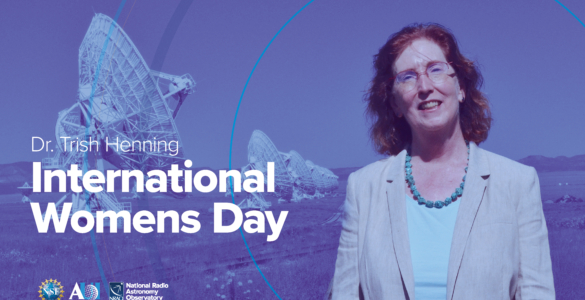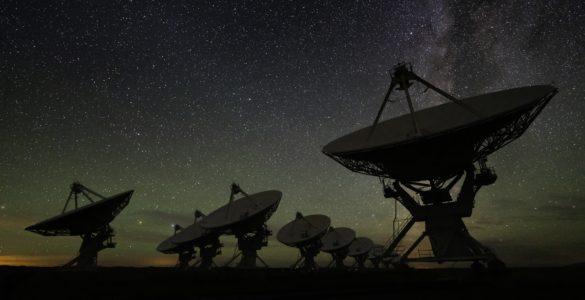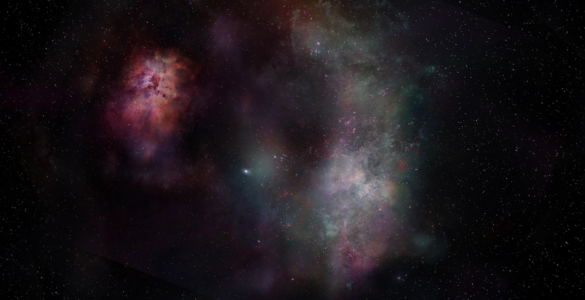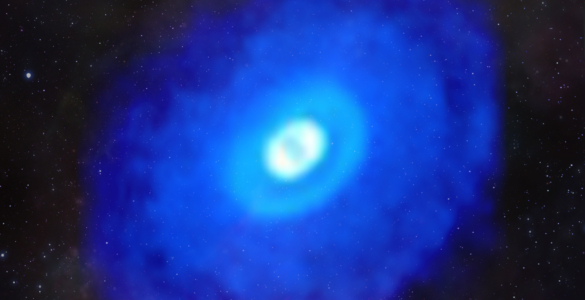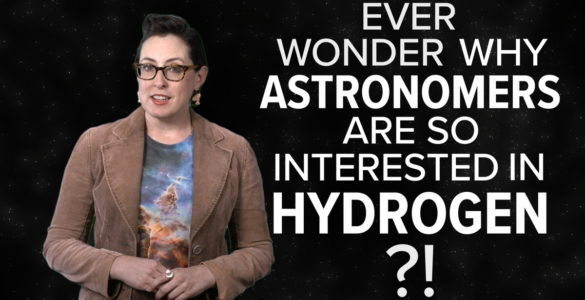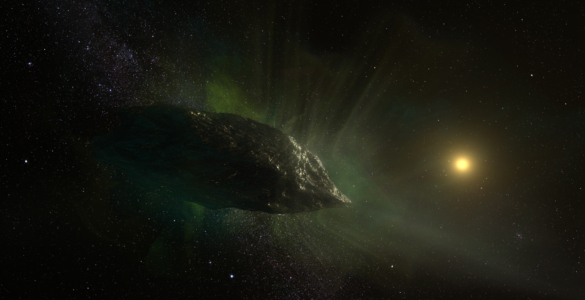Topics in This Issue:
The VLBA and other radio telescopes tracked the motion of 429 distant celestial objects to better calculate how fast the Universe is expanding.
Scientists using the new capabilities of the VLA have made a difficult, sensitive temperature measurement that sets the starting point for the beginning stage of star formation.
The Radio Astronomy Team (RATs), a high school group from Grosse Pointe, Michigan, celebrated its 25th anniversary at the NRAO in Green Bank, W.Va.
1. VLBA Helps Measure Expansion in the Current Universe
A fundamental tenet of our understanding of the Universe is that it is homogeneous and isotropic — that is, on a large scale, it should essentially be the same no matter which way you look. Included in that understanding is that the Universe’s expansion also should be isotropic, with the expansion progressing at the same rate everywhere. Studies of the Cosmic Microwave Background, the leftover radiation from the Big Bang, show that the net expansion has been isotropic over the entire history of the Universe. In 1998, scientists discovered that the Universe’s expansion rate now is increasing. That discovery indicated that the current expansion is, unlike in earlier times, dominated by the effect of an unknown force astronomers call Dark Energy. To see if the current expansion still is isotropic, Jeremy Darling, of the University of Colorado, analyzed the motions of 429 distant celestial objects that were measured by radio telescopes, including the National Science Foundation’s Very Long Baseline Array (VLBA). His work, he concluded, “rules out any deviation from isotropy more than seven percent” in the expansion rate of the current Universe. His method, he added, can become more precise as time passes and more observations are made. Also, he pointed out, the European Space Agency’s Gaia satellite, launched last December, is expected to provide data on a half-million quasars that, he said, could reduce the uncertainty to one percent. As the measurement improves, it could help scientists narrow down their ideas about the nature of Dark Energy. With very little data on Dark Energy, there are numerous theories about its nature. Some theories predict that its effect on matter would cause differences in the expansion rate in different regions of the Universe. If increasingly precise measurements of expansion strengthen the case for isotropy, such theories would become less likely. Darling published his results in the Monthly Notices of the Royal Astronomical Society.
2. Measuring the Starting Point for Star Formation
Scientists using the new capabilities of the National Science Foundation’s Karl G. Jansky Very Large Array (VLA) have made a difficult, sensitive temperature measurement that sets the starting point for the beginning stage of star formation. Stars get their start when the diffuse, tenuous gas in galaxies forms clouds that, in turn, condense into the stars. Much of that gas is warm, and must cool before it can form the cold, star-forming clouds. That cooling, and formation of the resulting clouds, is the critical first step in the star-formation process. A key to understanding this first step is to know the temperature of the warm gas. A research team used the VLA to make sensitive observations of neutral hydrogen gas in our Milky Way Galaxy, and measured the temperature of the “warm” gas at 7,200 Kelvin, or about 6,900 degrees Celsius, significantly higher than most previous measurements. “Knowing this temperature is essential for understanding star and galaxy evolution. This new measurement is an important step toward figuring out how this warm, diffuse gas turns into star-forming clouds,” said Snezana Stanimirovic, of the University of Wisconsin. “By measuring this temperature, we will be able to determine how long this gas takes to cool and condense,” she added. The higher-than-expected temperature suggests that the gas may be heated by ultraviolet radiation from stars in the galaxy, the astronomers said. Their results are the first observational evidence for this heating mechanism. The scientists published their results in the Astrophysical Journal Letters. The VLA observations are part of an ongoing project to survey gas in the Milky Way.
3. Radio Astronomy ‘RATs’ Celebrate 25th Anniversary at Green Bank
The Radio Astronomy Team (RATs), a high school group from Grosse Pointe, Michigan, celebrated its 25th anniversary earlier this week at the National Radio Astronomy Observatory in Green Bank, W.Va. The team formed in 1989 when a group of students visited the observatory and decided to build a radio telescope on the roof of their school. Since its inception, more than 200 students have been part of the club. RATs continues the tradition of visiting the observatory at least once each year, driving from southeast Michigan, to learn about radio astronomy and use the NRAO’s 40 Foot Telescope – a radio telescope dedicated to educational purposes. These students often continue their involvement in astronomy far beyond graduation and many have gone on to careers in engineering and science. At its silver anniversary gathering, the NRAO staff received a commemorative plaque that read: “The Grosse Pointe Radio Astronomy Team applauds you for 25 years of inspiration, advice, expertise and encouragement to the leaders of tomorrow. In particular, we recognize these individuals for their outstanding contributions to radio astronomy education.” Ardis Herrold, an astronomy teacher and adviser for the team, remarked: “Over the years, the staff members of NRAO in Green Bank have been exceptional at forging a unique collegial partnership between scientists, teachers and students. They have created ongoing opportunities for both teacher and student research using authentic (not contrived) data, in the context of working at a national observatory. The staff members are genuine and dedicated to their mission. They have a vision for how to immerse individuals in the process of science. The experience of visiting NRAO imprints on the lives of students and has long-lasting impact. The hands-on approach of using the 40 Foot Telescope and the trust of the observatory staff to allow the group 24-hour use of the facilities demonstrates deep respect and camaraderie, making lifelong memories on the students who have visited NRAO in Green Bank.”
The National Radio Astronomy Observatory is a facility of the National Science Foundation, operated under cooperative agreement by Associated Universities, Inc.
Contacts:
Dave Finley, Public Information Officer
(575) 835-7302
dfinley@nrao.edu
Charles Blue, Public Information Officer
(434) 296-0314
cblue@nrao.edu



